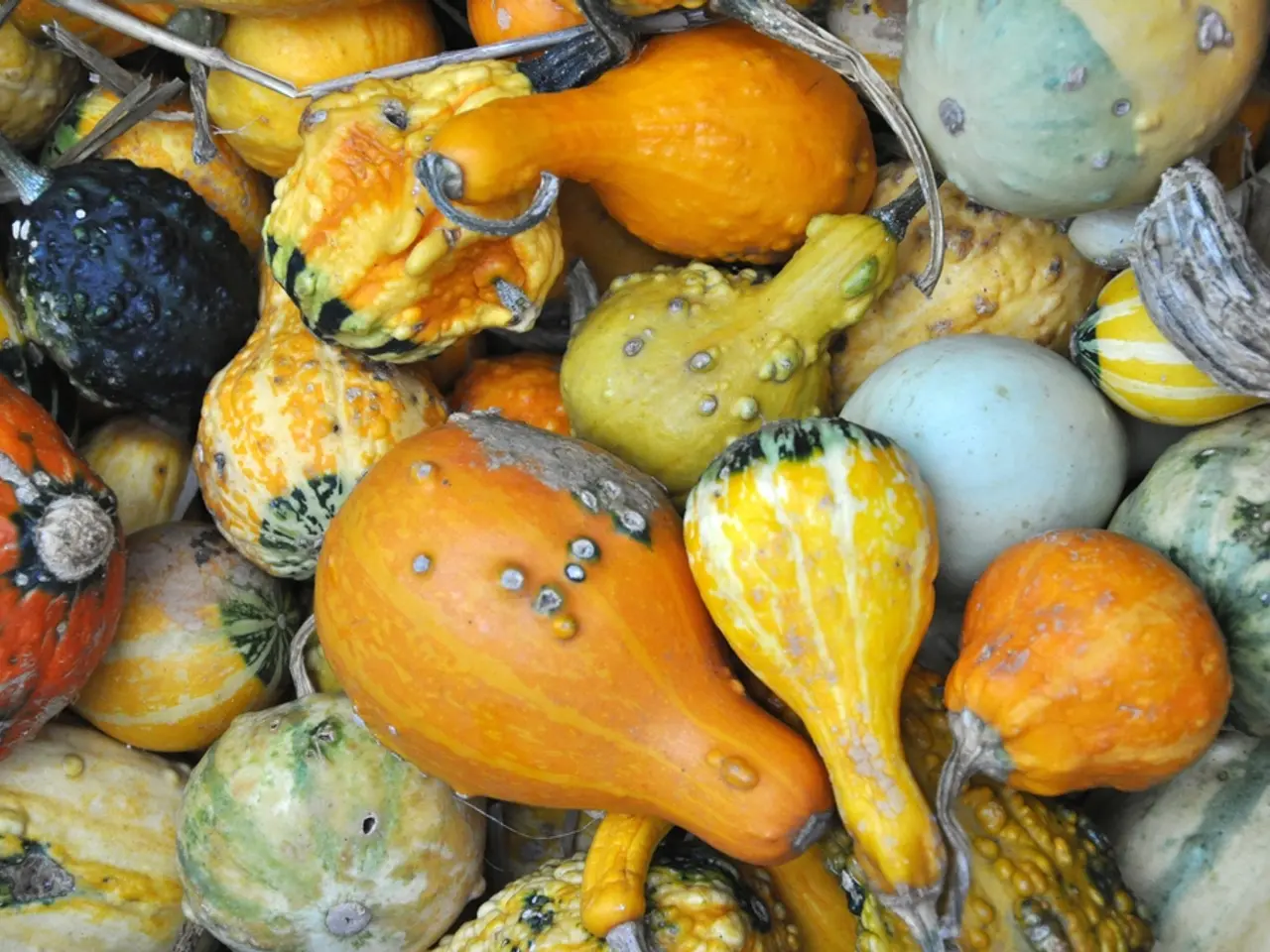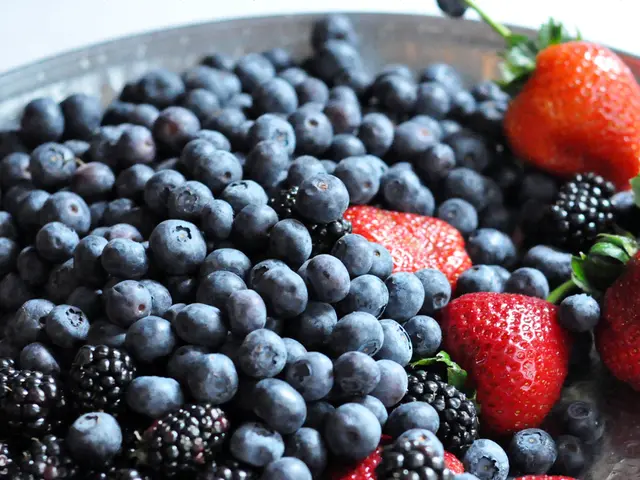Assessing Vegetable Quality via °Brix Value: A Synopsis on Measurement Techniques
Finding the Sweet Spot: Using a Refractometer for Better Fruit and Veggie Quality
Tired of guessing if your farm's produce is juicy enough for consumers? With this simple, affordable tool, you can make informed decisions that lead to sweeter, tastier fruits and veggies.
The magic number everyone's buzzing about in the produce world? °Brix. But what the heck is it and how can you measure it to boost your crop's quality? Read on, wise farmer!
What Is °Brix and Why Bother?
°Brix is a measure of soluble solids found in fruits and veggies. It's like a sugar report card for your crops, giving you a quick, easy way to gauge their sweetness and overall quality.
Bench-top refractometer
Understanding °Brix values lets you fine-tune your irrigation, fertilization, and harvesting strategies for the best results. And if you play your cards right, you'll have growers and buyers lining up for your sweeter-than-sweet produce!
Digital handheld refractometer
Putting Your Refractometer to Work
Analog handheld refractometer
Enter the trusty refractometer, the absolutely crucial tool for any grower seeking the ultimate fruit and veggie quality. This handy gizmo measures °Brix, and despite its high-tech name, it's actually quite simple to use.
Refractometers come in two varieties:
- The digital handy-dandy: This pocket-sized miracle worker relies on a digital display to show you the °Brix value of your produce sample.
- The old-school analog friend: This no-frills device relies on a scale reminiscent of an old thermometer to display your °Brix value.
Don't worry—either one will do the trick! Just remember to choose a model with Automatic Temperature Compensation (ATC) to ensure accurate readings, as temperature affects °Brix values.
Helpful hint: Measurements can be taken in the field. However, it may be easier to collect samples in the field and then take measurements in a workshop or kitchen with water nearby.
Taking a Reading: Step by Step
- Prep Your Produce: Choose healthy, representative samples from throughout your growing season and variety of locations in the field. Extract juice (or press the sample for root veggies) and filter it using a delicate task wipe to remove any larger particles.
- Calibrate Your Refractometer: Fill the measurement well with distilled water and press the calibrate button. The display should read 0 when calibration is complete. If not, repeat the process.
- Measure Joy: Place a few drops of your juicy sample into the measurement well and let the refractometer do its thing. The °Brix value will magically appear in a matter of seconds!
- Go Again: Repeat the process with other samples to get an idea of overall soluble solids content in your crop.[1][2][5]
Prepare to be astounded by the insights you'll gain from measuring °Brix! This simple practice will help you make informed decisions that lead to better produce, happier customers, and a thriving business.
Cautionary Notes
Fact sheets in this series:Using °Brix as an Indicator of Vegetable Quality: An Overview of the Practice, HYG-1650Using °Brix as an Indicator of Vegetable Quality: Linking Measured Values to Crop Management, HYG-1651Using °Brix as an Indicator of Vegetable Quality: A Summary of the Measurement Method, HYG-1652Using °Brix as an Indicator of Vegetable Quality: Instructions for Measuring °Brix in Cucumber, Leafy Greens, Sweet Corn, Tomato, and Watermelon, HYG-1653
When working with a refractometer, don't forget these important tips to get your measures right:
- Temperature Control: Take measurements at a consistent temperature or use an ATC refractometer to account for temperature variance.
- Cleanliness: After each measurement, clean the prism with distilled water and a soft cloth to prevent cross-contamination or residue buildup.
- Multiple Readings: Take several readings for consistent and reliable data.
With these best practices in mind, you've got all the know-how you need to turn your produce into the sweetest sensation on the planet!
[1] Best Practices for Using a Refractometer to Measure Soluble Solids (°Brix) in Fresh Fruits and Vegetables. (n.d.). Retrieved March 02, 2023, from https://ag.ucdavis.edu/ce-farm-advisor-articles/using-brix-as-an-indicator-vegetable-quality-overview-practice-hyg-1650.html
[2] Refractometer Measurement of Vegetable °Brix: Recipe for a Sweeter Crop Quality. (n.d.). Retrieved March 02, 2023, from https://ag.ucdavis.edu/ce-farm-advisor-articles/winter-vegetable-crop-manual/using-brix-as-an-indicator-vegetable-quality-hyg-1653.html
[3] Measuring Vegetable Quality: A Guide to Using ºBrix for Fresh Produce Quality Assurance. (n.d.). Retrieved March 02, 2023, from https://ca.affinity.co/app/todai/download/1983024496
[4] Best Practices for Sensory Analysis of Fresh Vegetables: Identifying Volatile Components and Soluble Solids Using Headspace Analysis and °Brix Refractometry. (n.d.). Retrieved March 02, 2023, from https://www.researchgate.net/publication/361761610_Best_practices_for_sensory_analysis_of_fresh_vegetables_Identifying_volatile_components_and_soluble_solids_using_headspace_analysis_and_Brix_refractometry
[5] Strategies to Improve Quality and Consistency in Fresh Fruit Juices. (n.d.). Retrieved March 02, 2023, from https://www.ncbi.nlm.nih.gov/books/NBK92754/table/ch30.t7/
The refractometer, a crucial tool in horticulture, measures soluble solids found in fruits and veggies, embodying the concept of °Brix, which serves as a quick and easy gauge for their sweetness and overall quality. By fine-tuning irrigation, fertilization, and harvesting strategies based on these measurements, crop production can be optimized to result in sweeter and tastier produce, enhancing health-and-wellness and fitness-and-exercise endeavors through better nutrition.
The digital handheld refractometer, a pocket-sized miracle worker, and the analog handheld refractometer, a no-frills device, are the two varieties of refractometers available, both capable of delivering accurate readings regarding crops' soluble solids content. It is advisable to choose a model with Automatic Temperature Compensation (ATC) to ensure the readings' accuracy, as temperature affects °Brix values.
Take several readings at a consistent temperature for consistent and reliable data when working with a refractometer. After each measurement, clean the prism with distilled water and a soft cloth to prevent cross-contamination or residue buildup.
Better produce, happier customers, and a thriving business can be achieved by implementing these practices for measuring soluble solids using °Brix. It is a simple yet powerful tool for informing crop production decisions, contributing to the science of horticulture in improving overall crop quality.







